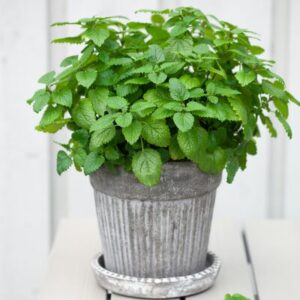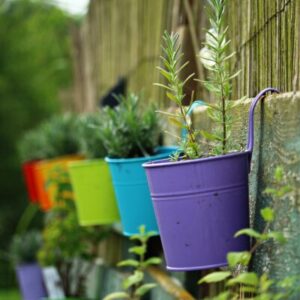*This post may contain affiliate links for which I earn commissions.*
Introduction
Welcome to the vibrant world of gardening! Every seed you plant brings life not just to your garden but also to your spirit. There’s nothing quite like the thrill of watching new growth sprout or the satisfaction of harvesting your fresh produce. But if you’re managing arthritis, the thought of digging in the dirt can feel a bit overwhelming. The good news? Gardening can still be a joyful and fulfilling hobby with the right techniques and tools. Let’s dive into practical tips designed to make gardening easier and more enjoyable for those of us dealing with arthritis.
Understanding Arthritis and Gardening
Arthritis affects millions of people, making movement and dexterity challenging. This condition can turn the joy of gardening into a struggle, as repetitive motions and physical demands can exacerbate pain. But don’t let that deter you! With a few adjustments, gardening can remain an accessible and enjoyable pastime. This article will share adaptive techniques, essential tools, and practical advice to help you embrace your love for gardening while keeping your joints comfortable.
Adaptive Techniques for Gardening
Here are some effective strategies to make gardening more enjoyable, especially if arthritis is a part of your life:
Container Gardening: Simplify and Control

Container gardening is an excellent way to reduce strain on your joints. It allows you to garden without the need for bending or kneeling. Choose lightweight containers that offer good drainage. Elevated planters and hanging baskets are fantastic options to keep your gardening tasks within easy reach. You can grow compact plants like herbs, salad greens, or colorful annual flowers that don’t require extensive maintenance. This method gives you control over soil quality and ensures your plants thrive!
Raised Beds: Easy Access, Better Growth
Raised beds can be a game changer for anyone with arthritis. They provide easier access and improve soil drainage while reducing weed competition. Consider building or purchasing raised bed frames made of sturdy materials. Aim for a height of 24 to 36 inches, which minimizes bending and stooping. Fill your raised bed with a quality soil mix that nourishes your plants. Arrange your plants strategically so you can tend to them without straining. This method allows for a productive garden with less physical stress.
Vertical Gardening: Expand Upward, Less Strain

Vertical gardening is a creative approach that lets you utilize walls, fences, or trellises. This technique not only saves space but also minimizes strain on your joints. Install trellises or shelves in sunny areas of your garden or patio. Opt for vining plants like tomatoes and cucumbers that thrive when grown vertically. You can even incorporate these structures into existing beds or containers to enhance your outdoor space. Vertical gardening can transform your garden into a visually appealing and functional area!
Essential Tools for Arthritis-Friendly Gardening
Let’s talk about some essential tools that can make your gardening experience more comfortable:
Ergonomic Garden Tools: Your Hands’ Best Friends

Ergonomic garden tools are designed to alleviate stress on your hands, wrists, and arms. Look for tools with padded handles, lightweight designs, and angled grips that allow your wrists and hands to move naturally. Non-slip handles provide added stability, enabling you to garden longer without discomfort. You’ll find a variety of ergonomic options for essential tools like trowels, pruners, and cultivators, making gardening easier and more enjoyable.
Assistive Devices: Handy Helpers for Movement and Comfort
Assistive devices can be a lifesaver for anyone with arthritis. Kneelers or garden stools provide support for your knees and back while you plant or weed. Choose adjustable-height stools with comfortable padding and sturdy frames. Reach extenders or grabbers allow you to access hard-to-reach areas without straining. Additionally, consider wrist supports or braces to provide stability during repetitive movements. By incorporating these tools into your gardening routine, you can enhance your comfort and enjoy gardening to the fullest.
Gardening Tips and Techniques for Arthritis Sufferers
Here are some practical tips to ensure your gardening experience is a breeze:
Pacing and Planning: Take it Easy
It’s essential to pace yourself while gardening. Break tasks into manageable chunks and take regular breaks to rest and stretch. Listen to your body—if it’s telling you to stop, heed that advice! Prioritize your gardening tasks based on your energy levels, tackling what’s most important first. Don’t hesitate to ask for help or consider hiring assistance for heavier lifting.
Warm-Up and Cool-Down: Limber Up and Wind Down

Before you start gardening, take a few minutes to warm up your muscles and joints. Gentle stretches can make a significant difference. Focus on the areas you’ll be using most—shoulders, arms, back, and legs. After your gardening session, don’t forget to cool down with more stretches and some deep breathing. This routine helps ease tension and boosts circulation, keeping those post-gardening aches at bay.
Smart Gardening Practices: Work Smarter, Not Harder
Adopting smart gardening practices can significantly reduce strain on your joints. Use long-handled tools to minimize bending and opt for lightweight equipment. Mulching your garden beds helps retain moisture and suppress weeds, reducing the need for constant maintenance. Maintain good posture while gardening by standing tall and using larger muscles to ease the load on your joints. If traditional gardening feels too challenging, explore alternatives like hydroponics or container gardening for a low-impact approach.
Conclusion
Gardening can present unique challenges for those with arthritis, but it doesn’t have to be a barrier to enjoying this rewarding hobby. With the right tools, techniques, and a touch of creativity, you can adapt your gardening practices to suit your needs.
From container gardening and raised beds to ergonomic tools and smart practices, you have the power to cultivate a thriving garden while keeping your joints comfortable. Remember to take it slow, listen to your body, and enjoy every moment spent in your garden sanctuary.
So, fellow green thumbs, I encourage you to explore these adaptive techniques. Gardening is not just about nurturing plants; it’s about nourishing your soul. With a sprinkle of determination and a love for the earth, you can create a garden that flourishes and brings you joy. Happy gardening!
Related articles:
Gardening with Arthritis: Ergonomic Tools for Comfortable Cultivation
Gardening with Arthritis: Creating an Accessible Enjoyable Garden
Join the Conversation
🙋♀️ I’d love to hear your stories! What gardening tips have you found helpful? Share your experiences in the comments—your insights could inspire someone else on their gardening journey!


